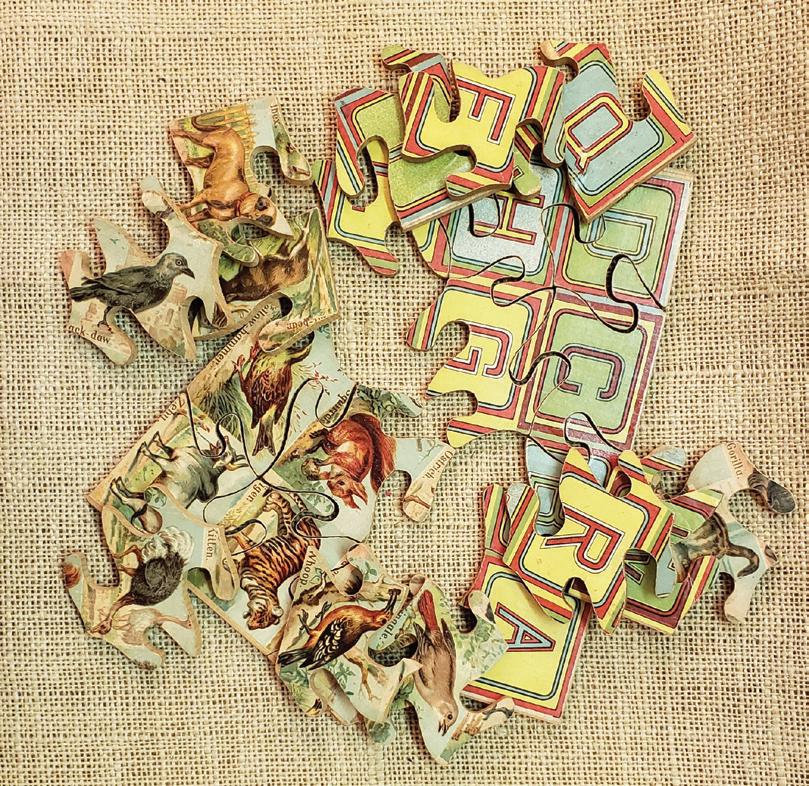
2 minute read
Jigsaw Puzzles Rise Again
The Covid-19 quarantine has stimulated a resurgence in the joys and challenges of the jigsaw puzzle. It is not the first time the puzzles have helped people through a difficult period. It was a favored pastime during the Great Depression during the 1930s.
The English engraver and mapmaker, John Spilsbury, is credited with creating the first jigsaw puzzle in 1767. He glued a map on a wooden board and cut it into pieces according to the general shapes on the map. The puzzle was called a “dissected map”. They were not called “jigsaw puzzle” until the 1880s. Spilsbury’s dissected maps were intended to educate children. Soon pictures of animals, nursery rhymes and historic scenes were being made as well. Because each puzzle was hand-cut, it had few pieces, and was quite expensive so only wealthy children had access to them.
The invention of the treadle powered jigsaw at the end of the 19th Century allowed for cheaper, more intricate puzzles. Now the adults got their own puzzles. Beautifully engraved scenes were cut along color lines making it difficult to envision the finished picture, which WAS NOT provided as a guide. The actual picture was only revealed as the puzzle was solved.

Homemade wooden jigsaw puzzle with a different picture on each side
Donated by Carl Woodward whose grandfather made the puzzle
Also, during this time, the Germans, Raphael Tuck and his sons, began making interlocking pieces and figural pieces or whimsies, which were in the shapes of animals or people. They started using plywood instead of expensive hardwoods, which made the puzzles more affordable. The English company, Chad Valley, began cutting the plywood puzzles in stacks speeding up production and decreasing the cost.
In the United States, Parker Brothers had been producing its popular games since 1883. They added their line of Parker Pastime Puzzles in 1887. Because of its popularity it became their main focus following the financial crises of 1908 and through World War I.

Parker Pastime child’s puzzle with its book-style box
Donated by Sheila Goggins
During this time die cutting methods were used on cardboard stock making production cheap enough that retail companies began giving away puzzles emblazoned with their products. Puzzles series such as the Jig of the Week and Jiggers Weekly were cheap and popular, and provided inexpensive entertainment during the Great Depression. Home cut puzzles became a source of income for woodworkers and handymen.
Around World War II the die cut cardboard process improved and took over the puzzle market. Wooden puzzles became a specialty. In 1963 Springbok Puzzles brought the circular puzzle to America sparking another jigsaw craze.
Today we are once again spending an inordinate time gathered around jigsaw puzzles.


ChristineLoyPhotography.com










